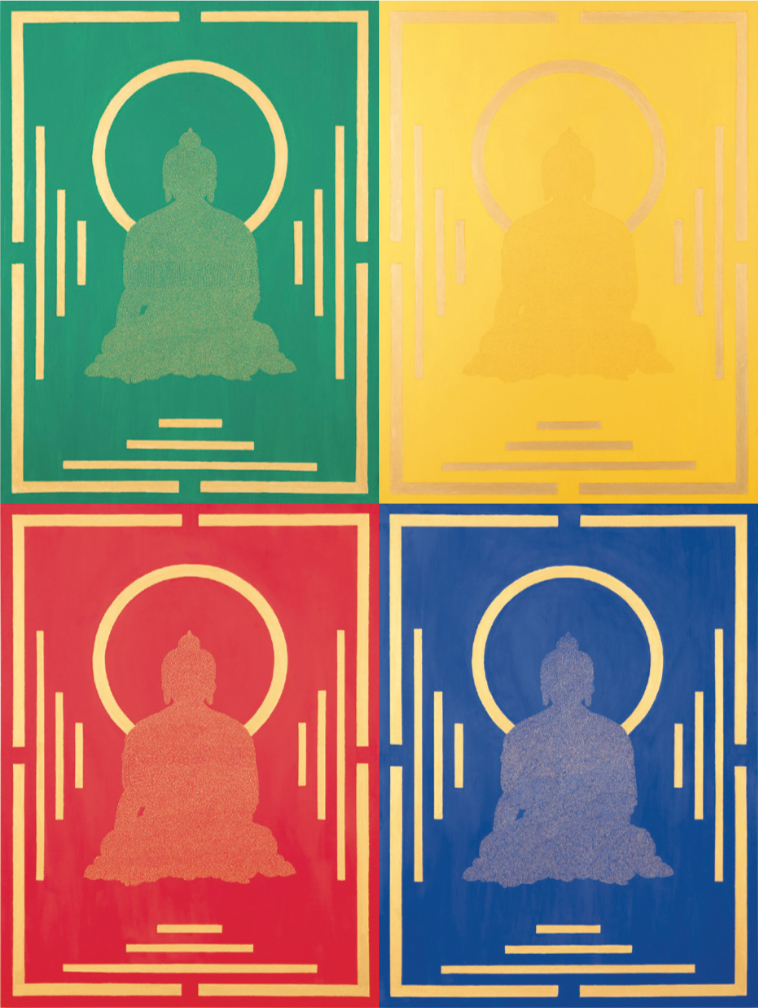
The Pali word nibbana (nirvana in Sanskrit) was first used by the Buddha to describe the highest state of profound well-being a human is capable of attaining. The mind awakens from delusion, is liberated from bondage, is cleansed of all its defilements, becomes entirely at peace, experiences the complete cessation of suffering, and is no longer reborn.
Related: What’s in a Word? Emptiness
More specifically, the fires of greed, hatred, and delusion—toxic unconscious mental and emotional dispositions that cause people to harm themselves and one another and cause suffering— have been extinguished (nibbuta) in a person who attains nirvana. The popular account is that nirvana means the “blowing out” of the flames, but it is more likely that the word is based on the idea of removing fuel so that a fire goes out, or releasing the fire from clinging to its fuel. There are two senses of the word in the early tradition: nirvana as the radical psychological transformation experienced by Siddhartha Gautama under the Bodhi tree at age 36; and parinirvana (“complete” nirvana) as the more enigmatic transformation experienced when the Buddha died between two sal trees at the age of 80. He attained nirvana when the toxic fires were quenched, lived for 45 years teaching others how to achieve the same end, and then entered parinirvana with the final passing away of his body and mental aggregates (feeling, perception, dispositions, and consciousness).
Related: Nirvana: Three Takes
One of the great challenges of the word nirvana is that it is expressed in both negative and positive language. If too much emphasis is placed on the negative definition (such as absence of delusion), there is the danger of misconstruing it as nothingness, while too much on the positive side (such as the highest happiness) can lead to the tendency to think of it as an eternal reality. The Buddha discouraged both by suggesting there are no adequate conceptual means of expressing nirvana.
Each of the two major Mahayana schools took a different approach to the topic. The Madhyamaka accentuated the negative mode, reiterating the ineffability of the term and dismantling the idea of a sharp contrast between nirvana as an exalted state and samsara as a fallen world. The philosopher Nagarjuna argued that nirvana and samsara (literally the “flowing on” from one life to another) are identical—it is only one’s mistaken point of view that makes the distinction.
Yogacara thinkers such as Vasubandhu tended toward the positive nature of nirvana. Building upon the idea of a transpersonal “storehouse consciousness,” they developed affirmative terms such as bodhicitta, dharma-kaya, buddhanature, and suchness. Tibetan forms of Buddhism tended to follow this lead, speaking for example of the “great bliss” of nirvana becoming accessible through tantric practice.
As Buddhist teachings moved into East Asia, both outward and inward orientations were further developed. The Tiantai and Hwayan schools built grand integrated cosmological systems organized around nirvana as the central principle of the cosmos, while Chan and Zen practice emphasized seeing into one’s inner true nature. The experience of nirvana was embodied by a lineage of masters expressing their inexpressible realization by creative and spontaneous responses to ordinary situations.
The post What’s in a Word? Nirvana appeared first on Tricycle: The Buddhist Review.
from Teachings – Tricycle: The Buddhist Review
https://tricycle.org/magazine/what-is-nirvana-in-buddhism/
from https://tricycle.org
#buddhist #buddhism
No comments:
Post a Comment